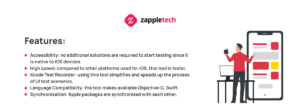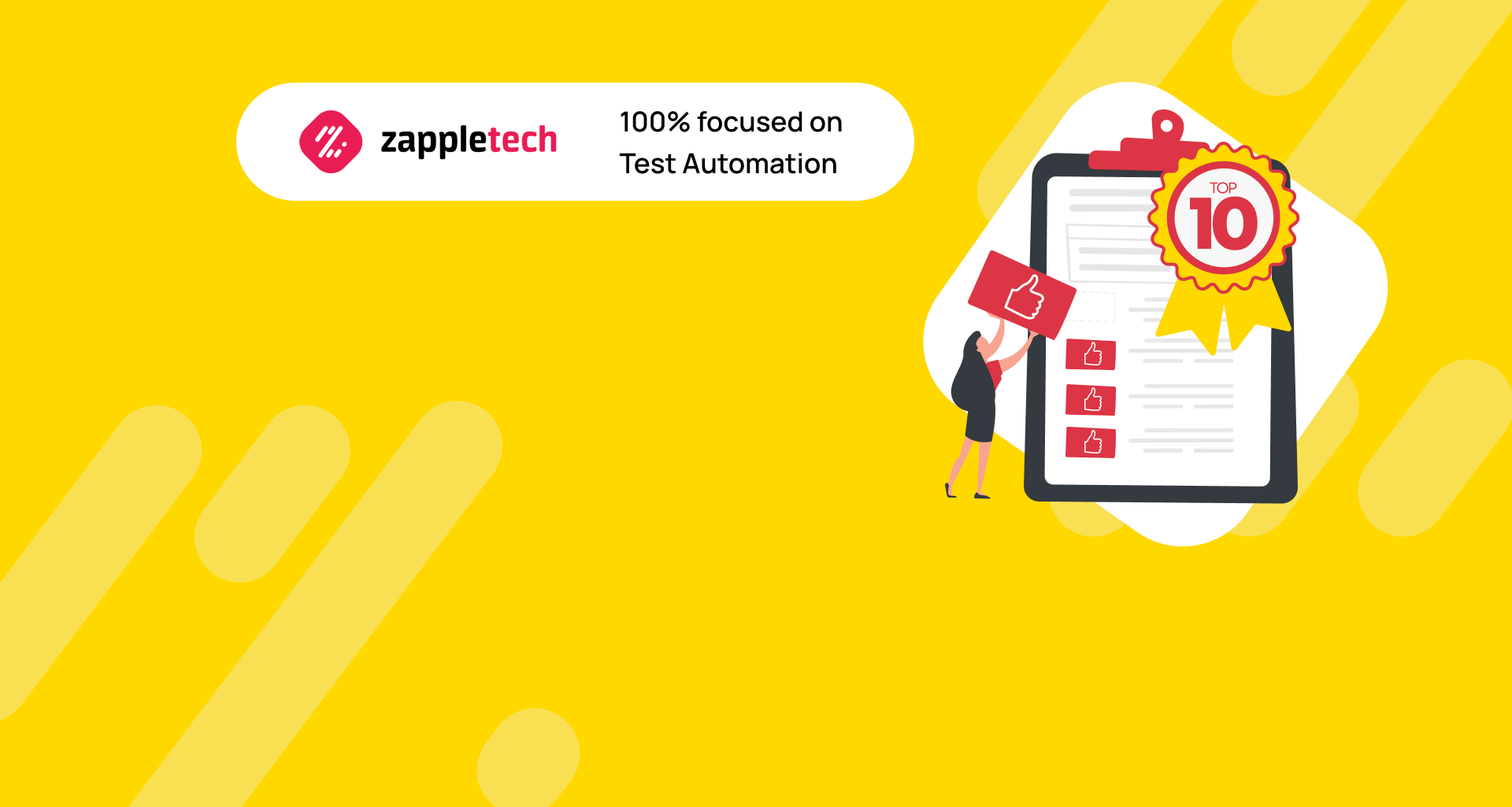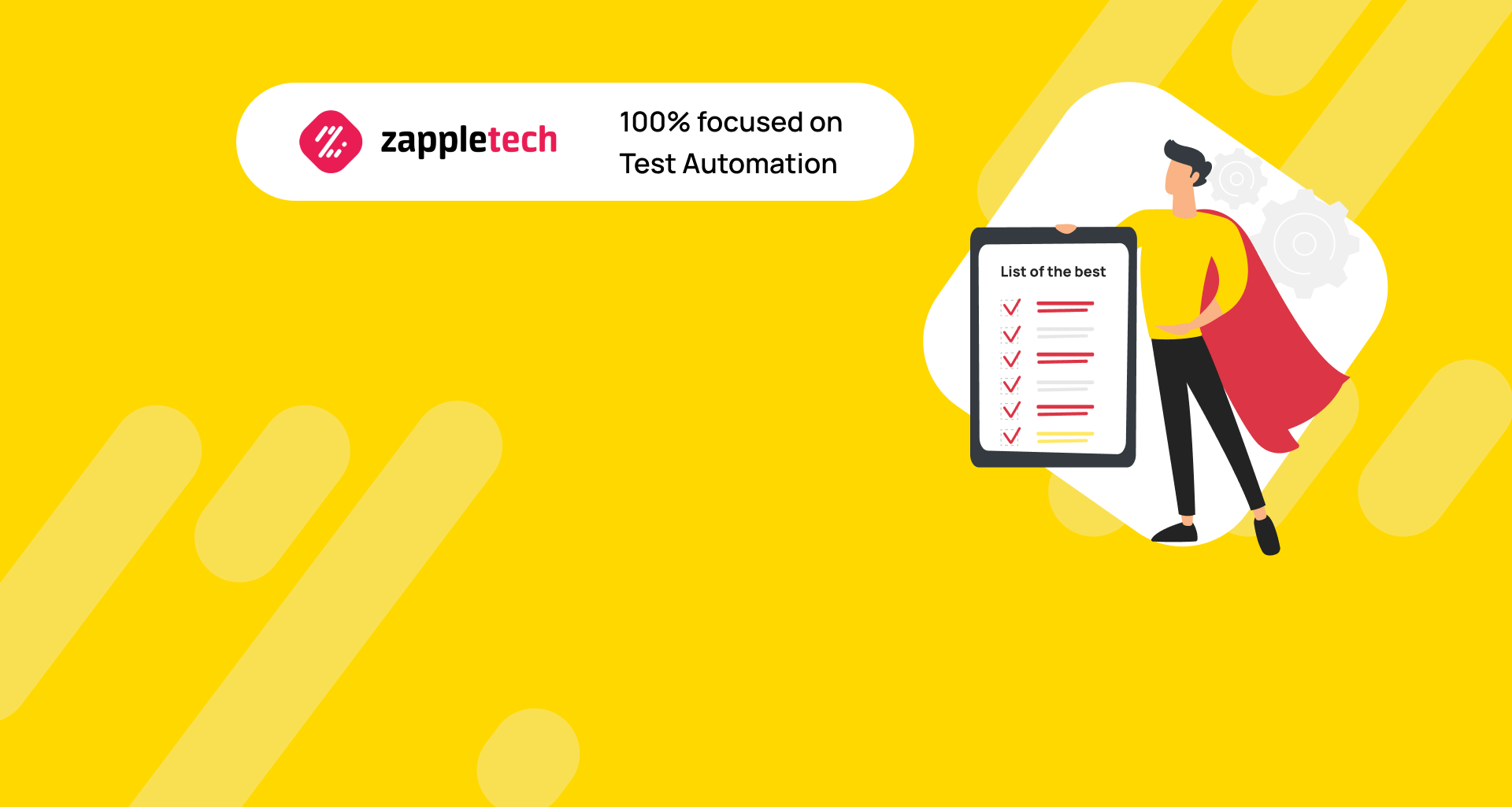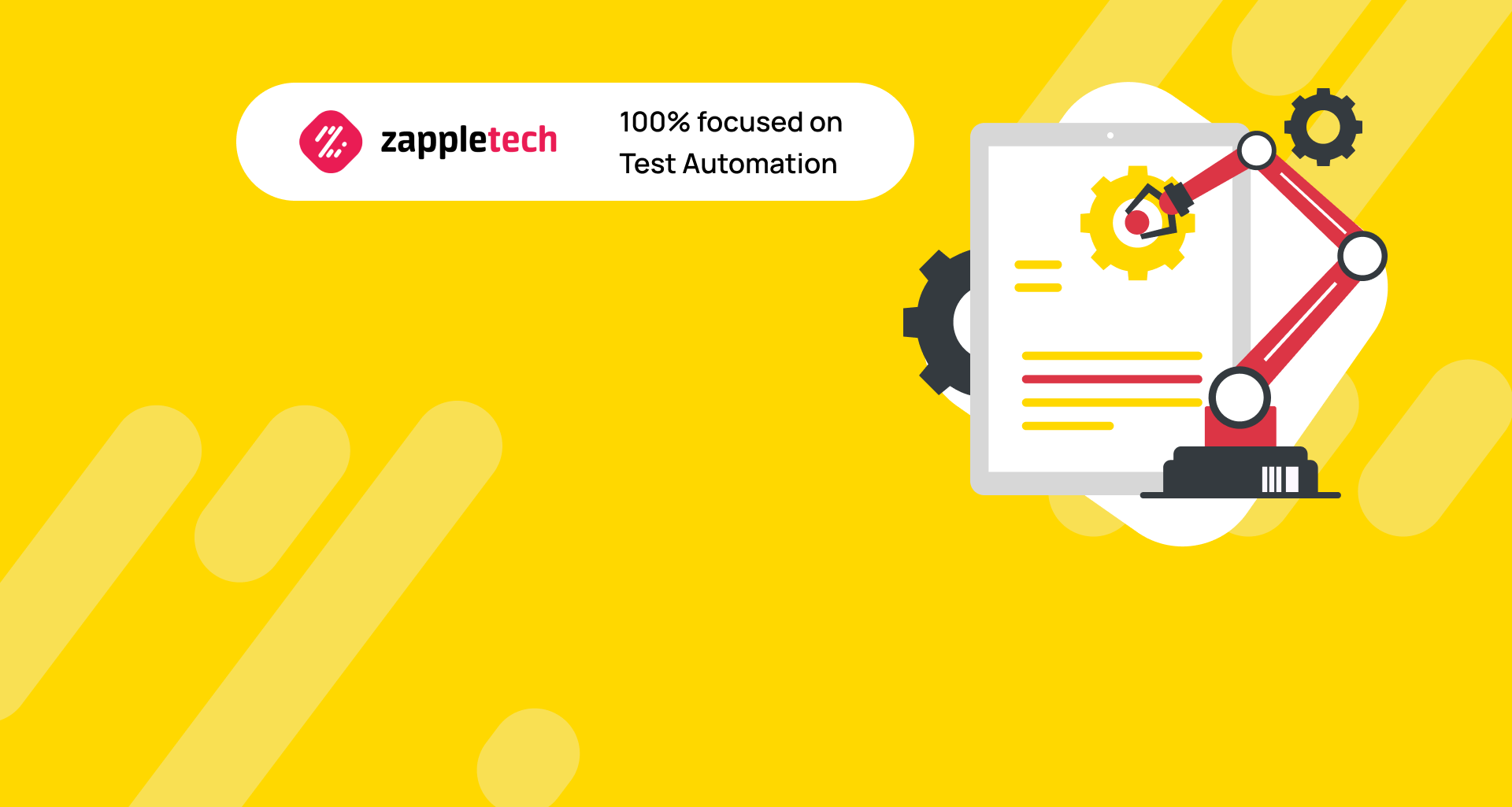When ordering iOS app test automation, a client expects to receive a reliable and stable product that can be safely submitted for publication in the store. And a tester should try to meet the expectations of a client fully. How to guarantee the success of testing? First of all, you need to choose the right tools that will provide high-speed and correct results for automated tests. In this article, we will describe the key features of 10 tools that are useful for iOS testers.
Table of Contents
Popular iOS Automation Testing Tools
Appium
A favorite tool of many professionals dealing with mobile solutions, regardless of type of operating system. Especially if you need to test code or run regression tests on a smartphone or tablet. The tool is valued for its cross-platform: tests are written using the API for both iOS and, Android, Windows.
Features:
Choice of languages: no need to recompile or modify the app under test.
Compatibility with Selenium WebDriver: a user familiar with Selenium features will master Appium without any problems.
Platforms: test works on iOS and Android without changing the code, compatible with any device and OS versions.
Record and Payback: convert user journeys into tests is done automatically, which speeds up the testing.
Opportunities for CI: platform integrates with several popular CI tools (Jenkins, Bamboo, etc.).
Calabash
One of those iOS app testing tools that are actively used in the field of UI Acceptance Tests. This one supports all top platforms testing frameworks and app types like the previous tool. It works with Cucumber, making writing tests accessible to non-technical professionals (analysts, managers, etc.).
Features:
Ease of use: thanks to the Gherkin language not necessary to have programming skills.
BDD philosophy: describing behavior in simple user- or business-oriented language.
CI/CD capabilities: automation environment supports CI/CD tools, including Jenkins.
Comprehensive API: integrates with development, testing, test management tools.
Platforms: tool interacts with iOS and Android on the Ruby-based framework.
XCTest/XCUITest
These are two AT frameworks. The former acts as Apple’s official modular testing environment. It integrates with the IDE to enhance the user interface ability to write tests, and run tests, as well as perform TDD.
CUITest is based on XCTest and includes additional classes. Swift or Objective C is used to create test scripts and write unit tests.
Features:
Accessibility: no additional solutions are required to start testing since it is native to iOS devices.
High speed: compared to other platforms used for iOS, this tool is faster.
Xcode Test Recorder: using this tool simplifies and speeds up the process of UI test scenarios.
Language Compatibility: the tool makes available Objective-C, Swift.
Synchronization: Apple packages are synchronized with each other.

KIF
KIF is automation framework often chosen for iOS automated testing in the UI area. It is linked to Xcode and can be included in a project. If automated test scripts the project is done with XCTests, just add the KIF module to it. Tests are created in Objective-C and Swift.
Features:
Close connection with Xcode: the tool can be integrated into an Xcode project; therefore, no additional packages or web servers are needed.
Broad coverage: test suit can be run for iOS 8+ and Xcode 7+ (for versions below mileage may be different).
Test Like a User: the tool simulates how a user would use the app in real life.
Synchronization: Apple packages are synchronized with each other.
Easy to use: you only need basic dependency management knowledge to start.
Bugfender
It is a log storage service appreciated by app developers. The tool logs errors and crashes on all devices and reports them. This allows you to track and fix bugs without waiting for users to encounter them. Bugfender also collects other information that helps to understand users.
Features:
Device Management: you can enable/disable devices depending on the users you want to monitor.
The log viewer: detailed by device, OS, and individual user, giving a “360-degree insight into user base”
Crash reports: the tool “explains” what led to the crash, making it easier to develop a preventive strategy.
Feedback: by creating a bespoke feedback screen, you can receive information about issues within an app from the clients.
Integrations with Zapier: you can connect to Chat & Messaging Apps, Team Collaboration Tools, Bug Tracking Tools, Customer Services & Help Desks.
Detox
The platform is designed to perform gray box E2E testing and test automation frameworks most of mobile applications. The environment is based on JavaScript. The tool works seamlessly with test runners like Jest and Mocha and supports the latest mobile platforms.
Features:
Support for Test Runners: Jest and Mocha tools will work to run a test.
Platforms: it is possible to write end-to-end tests for both iOS and Android.
Autosync: the tool can track asynchronous operations in the product and “stops flakiness at the core”.
Opportunities for CI: E2E tests run on various CI platforms, including Travis CI, CircleCI, Jenkins.
React Native projects: the tool requires less cost and effort to incorporate into React Native projects.
EarlGrey
It is one of the iOS app automation testing framework tools which allows you to write automated tests and create clear and concise white-box functional UI tests (in Objective-C/Swift). The framework from Google is based on three components: Matchers, Actions, Assertions. QA professionals appreciate its built-in synchronization capabilities, which provide smoother and faster work.
Features:
Synchronization: the tool automatically tracks changes in the UI, various queues, network requests.
White Box: EarlGrey extends white-box testing capabilities.
Native development: tests are written in the UI Testing Target within the Xcode Project.
Proven effectiveness: Google uses EarlGrey for its own apps, e.g., YouTube and Google Calendar.
New version: EarlGrey 2.0 is a combination of EarlGrey and XCUITest, which allows you to write clear tests.
OCmock
Used to create stubs in iOS apps. OCMock 3 has new features and is almost completely backwards compatible with previous versions. Interesting changes include modern syntax, post-launch checks, and the Apache 2 license.
Features:
Modern syntax (addition to existing one) uses macros and parentheses.
Post-launch proof: the new version supports this approach in addition to the traditional one.
Improved reporting: better error reporting with modern syntax.
Clear distinctions: again, modern syntax emphasized the distinction between mock setup and method calls.
Apache License 2: a widely used permissive license with additional benefits.
FBSnapshot TestCase
This is one of the very useful iOS app unit testing framework tools that has a simple implementation. This tool was originally created and maintained by Facebook. The company then withdrew support as it made another better unit testing tool connected to its internal infrastructure.
Features:
Speed: the tool creates an instant image snapshot of its contents.
Efficiency: unlike Fastlane Snapshot, the described tool compares the view’s reference image and current rendering and reports errors.
Automatically names: FBSnapshot TestCase automatically names reference images on disk based on the test class and selector.
Error message: if a crash occurs, the tool will report it via the console.
Control: a user has the ability to monitor the addition of the device model, OS version, screen size, etc.
Frank
It is a good example of a functional test tool created in Cucumber and run on a remote device. Testers choose it for structured and acceptance tests when there are time constraints for manual testing of mobile apps. One of Frank’s features is the app inspector Symbiote, which provides information about the running app.
Features:
Quick setup: it takes no more than 10 minutes to set up an iOS app.
Video Recording: the tool records video test runs to track the product in action.
Unlimited running: tester can run tests, whether on a device or a simulator.
Language clarity: non-technical people can work on test cases thanks to Cucumber.
Symbiote: a powerful inspector performs real-time testing.
The speed of task execution and the correctness of the results depend on how responsibly you take the choice of a tool for AT test creation. This means the success of the whole project. Zappletech recommends that you consider the pros and cons ahead of time, choosing only proven tools with confirmed effectiveness by millions of testers worldwide.




